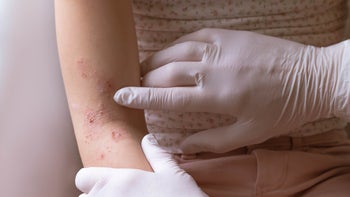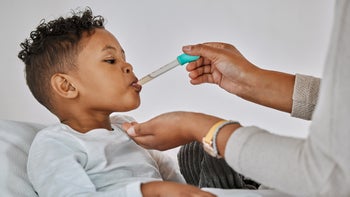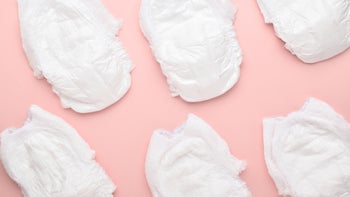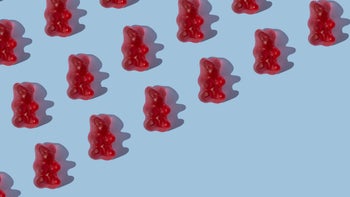
Should You Be Worried About Bedwetting?
Key takeaways:
Many children don’t stay dry overnight until they’re 5 years old.
If your child is still bedwetting after their fifth birthday, talk to your healthcare provider to make sure a medical condition isn’t the cause.
To help decrease bedwetting, you can try changing bedtime routines or using alarms and medications.

As a parent, you were probably delighted when your child finished potty training. You were finally free of changing, laundering, and buying diapers. You knew to expect setbacks and occasional accidents. But if your child still regularly wets the bed at night, you may be wondering if there’s a problem.
Bedwetting is extremely common. About 20% of children still wet the bed when they’re 5 years old. That number drops by about 15% every year. But that means 3% of teenagers are still occasionally wetting their beds.
So the short answer — yes, it’s totally normal for your child to wet the bed, especially if they’re under 5 years old. But in some cases, bedwetting can be a sign of another medical condition. If your child is older than 5 years old and still wets the bed, here’s what you need to know about bedwetting.
Save over 40% on Qsymia with GoodRx
Discover the once daily Qsymia for weight management. Qsymia is for adults and children 12-17 in combination with a healthy diet and regular exercise.

What causes bedwetting?
The medical term for bedwetting is “nocturnal enuresis.” There are two types of enuresis — primary and secondary — and they both have distinct causes.
Primary enuresis
Primary enuresis describes a situation where a child older than 5 years old has never been completely dry. A child isn’t considered fully continent until they don’t have an accident for 6 months in a row. Isolated nocturnal enuresis — bedwetting at night — is the most common kind of primary enuresis.
Researchers have proposed several reasons for why bedwetting happens:
Genetics: Studies show that kids with primary enuresis often have one parent (or two) with a history of primary enuresis. For example, a child has a 40% chance of developing primary enuresis if one of their parents has a history of bedwetting. That chance goes up to 70% if both parents had primary enuresis. Researchers are starting to find several possible genes that are involved in enuresis.
Bladder capacity: Kids who wet the bed may have smaller bladders, so they’re not able to hold enough urine in to make it through the night without going to the bathroom.
Kidney filtration: The kidneys make urine to filter out waste from the body. Some people’s kidneys are more active at night than during the day. Kids who make more urine while they sleep are more likely to wet the bed.
Brain connections: Waking up at night to go to the bathroom may feel easy as an adult, but it took your body a long time to figure out how to coordinate that activity. Your brain needs to figure out how to tell your body’s different parts to hold urine until the morning or to get up and go to the bathroom. It takes some people longer than others to figure this out — and there’s nothing that speeds up the process.
In short, primary enuresis occurs because of how the body works. There’s nothing anyone can do to change it — and it’s totally normal.
Secondary enuresis
Secondary enuresis describes a situation where a child who has been continent for at least 6 months starts to have accidents again. Secondary enuresis is usually a sign of an underlying medical condition. If your child has secondary enuresis, your healthcare provider will need to do some tests to see what could be causing your child to wet the bed.
Before going down that path, your provider will want to make sure that your child truly meets criteria for secondary enuresis. Don’t be surprised if they ask you many times if you’re sure about how long your child has been dry at night — they’re just trying to avoid unnecessary tests since primary enuresis is much more common.
Read more like this
Explore these related articles, suggested for readers like you.
What medical issues can cause bedwetting?
Common causes of secondary enuresis include:
Stress: It’s not uncommon for a child to start wetting the bed again during a stressful period. Some triggers for this include a new baby at home, a big move, a new school, a death in the family, or divorce. Family and child-centered therapy can be really helpful in these situations. Not only will it help your child process their feelings, it can also help relieve the bedwetting.
Constipation: Constipation is a very common cause of secondary enuresis. The colon holds stool and sits behind the bladder. If a lot of stool sits in the lower colon, it can push on the bladder, and urine may leak out. Short-term use of stool softeners and adding fiber to your child’s diet can help relieve constipation.
Sleep apnea: Some kids with large tonsils or adenoids develop sleep apnea. Larger tonsils or adenoids can block airflow during sleep and cause pauses in breathing. These sleep disruptions can lead to bedwetting.
Urinary tract infection (UTI): UTIs can lead to bedwetting. While some kids may complain of discomfort when they go to the bathroom, many kids don’t have any symptoms. If your child has secondary enuresis, it’s standard for your provider to check their urine for signs of infection.
Diabetes: One of the major symptoms of new onset diabetes is going to the bathroom more often. Sometimes bedwetting is the first sign that a child has developed diabetes. Your child’s urine sample may show glucose (sugar) if this is the case.
There are other conditions that can cause bedwetting, but they’re much less common:
Kidney conditions: The kidney makes urine and helps clear substances from the body. When the kidney doesn’t work right, your child may develop bedwetting.
Seizures: Some children who develop seizure disorders start off by having seizures in their sleep.
Urinary tract issues: Certain conditions affect the structures of the urinary tract — the tubes that bring urine from the kidneys to the bladder and then outside the body. Conditions like posterior urethral valves and ectopic ureters can cause bedwetting.
What’s the best way to deal with bedwetting as a parent?
Regardless of why your child is wetting the bed, it’s important to be supportive. Children often feel bad, embarrassed, or even ashamed about wetting the bed. Reassure your child that bedwetting isn’t their fault and that it’s completely OK.
If your child has secondary enuresis, reassure them that you will work together with your healthcare providers to make sure they’re safe and healthy.
If your child has isolated nocturnal enuresis, reassure them that bedwetting is very likely to go away over time as their body matures. Remind them that just like it takes time to do things such as learning to ride a bike or tying shoelaces, it takes time to learn how to control our bladders.
In the meantime, there are some things you can do to help your child:
Try to limit liquids after dinner. Let your child drink if they’re thirsty, but if they’re used to a glass of water or milk right before bed, try to replace that transitional activity with reading a book.
Make sure they use the bathroom right before getting into bed. If possible, wake your child overnight (just once) to use the bathroom.
If your child is older, make the bed using two fitted sheets separated by a waterproof sheet. That way, if your child wets the bed, they can take off the top wet sheet and the waterproof sheet and still have a dry sheet underneath. This lets them get back into bed easily without needing your help to make the bed.
If your child is older, leave out extra pajamas and teach them how to use the washing machine. Sometimes being in charge of these activities can help children feel more independent and in control of the situation.
If these things don’t help, there are other options like medications and alarms.
What products can help with bedwetting?
A bedwetting alarm is the most common product to help with bedwetting. These devices consist of sensors that attach to bed covers or pajamas. They buzz or ring when they detect moisture. The hope is that your child wakes up when they hear the alarm, stop urinating midstream, and then finish up in the bathroom. Research shows that alarms work very well — but only if they actually wake up your child. If your child sleeps through the alarm, you’ll have to get up and then wake them up. If your child sleeps in a separate room, this may not be feasible for your family.
What medications can help with bedwetting?
Desmopressin (DDAVP) is a medication that decreases how much urine the kidney makes. Your child can take this medication as a pill or nasal spray. Desmopressin does stop bedwetting — but only when your child takes a dose. Because it’s a hormone and there aren't a lot of studies on long-term outcomes from prolonged use, most parents prefer to limit the use of it to short periods. Desmopressin is a great option for situations like vacations, overnight camps, and sleepovers.
Anticholinergic medications can also help with bedwetting. These have more potential side effects. Providers only recommend them when children don’t respond to other therapies. Your child will likely need to see a urologist for an evaluation before starting this medication.
The bottom line
Many children still wet the bed after they turn 5 years old. But most kids will outgrow this condition by the time they become teenagers. If your child is older than 5 and still wets the bed, talk to your healthcare provider to make sure the bedwetting isn’t because of another medical condition. There are many things you can do to help with bedwetting — from changing night time routines to medication and bedwetting alarms.
Why trust our experts?


References
Chung, E. (2018). Desmopressin and nocturnal voiding dysfunction: Clinical evidence and safety profile in the treatment of nocturia. Expert Opinion on Pharmacotherapy.
Fergusson, D. M., et al. (1986). Factors related to the age of attainment of nocturnal bladder control: An 8-year longitudinal study. Pediatrics.
Forsythe, W. I., et al. (1974). Enuresis and spontaneous cure rate. Archives of Disease in Childhood.
Healthychildren.org. (2019). Bedwetting in children & teens: Nocturnal enuresis. American Academy of Pediatrics.
Kiddoo, D. A. (2012). Nocturnal enuresis. Canadian Medical Association Journal.
National Kidney Foundation. (n.d.). Bedwetting in children & teens: Nocturnal enuresis.
von Gontard, A., et al. (2001). The genetics of enuresis: A review. The Journal of Urology.





























